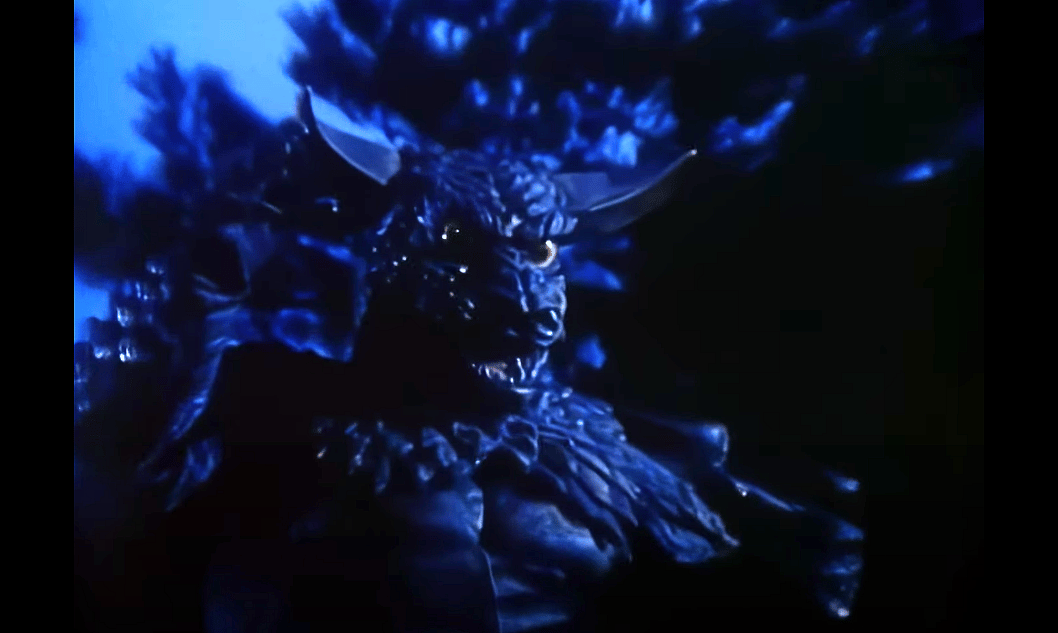Kaiju History: ‘Pulgasari’ Has An American Remake No One Remembers – Or Needs

As 2024, a year full of them, winds down, I’m reminded of a truth Hollywood forgot because of its obsession with legacy sequels and reboots. I realize and agree not everything needs a remake even if it might be good, but countering that in this world of paradoxes is the yang school of thought that begs a valid line of questioning: Why not remake bad movies? You can’t do any worse, can you?

While I empathize with the logic and intentions behind such questions, the lingering elephantine follow-up of “Who is this for?” always stays crowding the room, which is fitting. This wondering’s implications are as heavy as a pachyderm – and a kaiju. That’s why this month in Kaiju History, I’d like to introduce you to a remake whose very existence leaves one pondering the nuances of those questions. Note that I say “introduce” because chances are good you’ve never heard of the movie I’m talking about.
However, I am willing to bet you have heard of its inspiration (as it’s my hope and assumption you read this column somewhat regularly). A while back, I told you about the stunning and convoluted story of Pulgasari, a North Korean giant monster movie based on a Medieval legend of an iron-devouring creature. The film itself, you may recall, was less fascinating than the story behind the making. Lines literal, figurative, and international were crossed to beef up what there was of a cinema scene above the Armistice Line – and to stroke a despot’s ego.

The captured South Korean filmmaker who directed it, Shin Sang-ok, and his wife/collaborator, once escaping, found refuge in the US. With that new beginning, you’d think Shin might be eager to leave the past behind. Instead, he went back to that well to make The Adventures Of Galgameth (or simply Galgameth) in 1996. The story pattern is the same except the Korean setting is switched to a Dark Age European one where the cast is all caucasian.
Shin also took out the blood element and changed the main character from a peasant girl to a boy prince whose tears bring to life the statue of a legendary family guardian his father, the King, gives him. The guardian’s name? Galgameth. He becomes the prince’s protector as they are pursued by the black knight, El El (seriously), trying to take the throne for himself.

“Galgy,” as he’s called, gets up to all the required metal munching and gradually grows until he is several stories tall and saves the kingdom. The trouble is it takes the entire movie to get there, so the one major scene of kaiju destruction happens at the climax. The thing to write home about here is Abe Sapien actor Doug Jones plays the big version of the monster. Otherwise, Galgy or whatever you want to call him is a creepy-looking foam rubber Jim Henson ripoff meant to be kid-friendly.
Shin produced Galgameth under his pseudonym Simon Sheen through the production company he founded while asylum-living in America, Sheen Communications. At that point, his career was peaking with the 3 Ninjas series. The film was shot in Romania which is great for the setting. You can still find convincing architecture from the Middle Ages including Castle Dracula.

Production wasn’t nearly as dramatic or chaotic as its counterpart as far as anyone knows. Honestly, there aren’t many tales from the set with this one. The most I could find was the multiple writers responsible for the script. Shin created the story and a rejected draft of the screenplay was co-written by Smallville writer-producer duo Al Septien and Turi Meyer.
The shooting script was written by Michael Angeli whose name might sound familiar, but this was years before he became a producer on Dark Angel and Syfy’s revered Battlestar Galactica relaunch. Other than that, there isn’t a lot to report on the ground.

Galgameth’s release wasn’t much of a splash either, rolling out in Spain first and then Japan and Australia soon after. It didn’t make it to the US until late in the summer of ‘97 when it hit home video, and if memory serves, it wasn’t a staple of independent stores or Blockbuster. I could be wrong, but I can’t find any rental or box office receipts.
Scores on the usual aggregate websites are poor to average. Rotten Tomatoes gives it a 38 percent among audiences with no critic score. Letterboxd averages it at a 3.1 out of 5 with most positive reviews falling back on childhood nostalgia. Interestingly, IMDB’s score is a 6 out of 10 which is higher than Pulgasari.
Despite that, Galgameth didn’t really benefit from its connection to its forebear, and timing had a lot to do with that. It was more of a product of its era which was teeming with failed fantasy epics like Dragonheart, Godzilla cash-ins such as the Gamera trilogy and the ‘98 Roland Emmerich film, and live-action franchises such as New Line’s Ninja Turtles movies with Jim Henson’s name attached.
Trying to capitalize on it all is a smart move, but they should have considered that a lot of these swings were misses and strikes (especially Dragonheart and Turtles 3) that are remembered for all the wrong reasons in the way Emmerich’s Godzilla is. With only so much shelf space to go around and an adequate amount of titles awaiting rediscovery, Galgameth was drowned out swiftly and easily.
Were it made today in the era of social media and YouTube where everything is forever, along with the awareness of NK’s attempts at making an impression on international cinema, perhaps it could have carved out a niche. For now, Galgameth is a rare, though not lost, film that may still develop a following one day if more people find it (not that I’m starting a call to action or anything).
